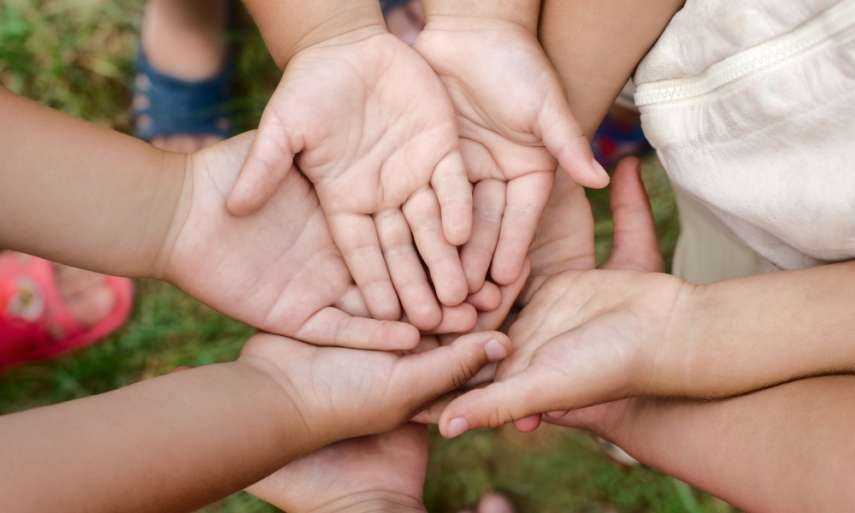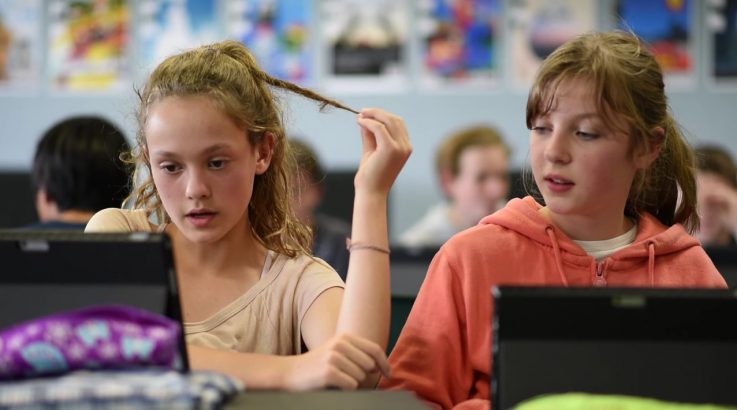Do school education programs play an important role in the prevention of child abuse? Police officer, Andrea Musulin believes so.
‘Perpetrators tend to choose easy targets, so they are less likely to pursue a child that has been taught [about child abuse]. Schools can play a vital role in teaching students about [child abuse] and providing an environment that supports the value of self and safety,’ she says.
Musulin, who has been in the police force for over 20 years, is also the Executive Officer of Protective Behaviours Western Australia Incoporated. This initiative encourages a proactive whole school approach to the prevention of child abuse, which is founded in long-term student education.
In consultation with the Department of Education Western Australia, Protective Behaviours WA has developed the Protective Behaviours Primary School program, Holding Hands, which aims to develop problem-solving skills and assertiveness in children; arming them with the knowledge to know when something isn’t right - thereby empowering them to say no.
'The grooming process offenders use to entrap and silence children from disclosing the abuse to a trusted adult requires a coordinated and targeted (combative) educational program and that is exactly what the [program] provides,’ Musulin explains. ‘Outside of abuse, the program can also be used to assist children keep safe from all forms of unsafe and hostile situations they may find themselves in. It teaches the child to seek the appropriate help when they are not feeling safe.'
The Holding Hands program covers 10 topics. The main themes include developing networks - where students are encouraged to choose five adults they trust to ask for help if they feel scared or unsafe - understanding what constitutes a ‘private part’ of the body, and differentiating between 'safe' and 'unsafe' secrets.
‘We encourage [the topics] to be taught consistently throughout the primary years,' Musulin says.
The program also provides specialist teaching advice and lessons for Indigenous students and children with disabilities or special needs.
East Butler Primary School is just one of the WA schools involved in the program.
Principal Andrew Gorton says he and fellow staff members are committed to providing Protective Behaviour (PB) education from Kindergarten to Year 7. The PB program has been running at East Butler since the school opened in 2007 and Gorton explains that it has now become a part of the 'school’s language.'
'Protective Behaviours education is embedded in our school’s ethos and is an important feature in one of the school priorities of Student Wellbeing,' Gorton says. 'The main themes are … displayed prominently in our covered assembly area and in the early childhood area of our school.
'I believe many schools avoid Protective Behaviours and don’t want to confront the issues,’ Gorton says. ‘We see immeasurable benefits in running the program, as indicated by the positive discussions generated with students.
‘Inevitably, disclosures may result from the lessons, but these are dealt with carefully and with sensitivity. When dealing with incidents at school - such as when someone is hurt or threatened - kids will tell us about how they have the right to feel safe and they feel they can tell someone about it when they are not; this is great and reflects that these key messages are getting through.'
The school has a PB Coordinator who, in addition to her Senior Teacher role, is responsible for promoting and coordinating the program. The PB Coordinator drives the program through regular updates at staff meetings, ensuring teaching resources are maintained. 'In this way, we are all consistently reminded of its importance,' Gorton adds.
All teachers at the school are trained presenters in the PB program, ensuring consistency in content delivery. Gorton says this is important, because when questions arise throughout the lessons teachers will know how to respond appropriately.
The program also offers flexibility, not in the presentation of its main themes, but in the timeframe for delivery and tangents that arise through open class discussions.
'Each class is at a different stage in the program and teachers pace the lessons according to the needs of the children. Certain topics may need to be emphasised more in one class than another. If there are many questions on one topic the teacher may decide to spend more time going over the lesson’s content,” Gorton explains.
Parents at the school play an important role in reinforcing the PB principles. The PB Coordinator organises parent information workshops and parents are kept updated on a regular basis.
'The latest Protective Behaviours Parent workshop was in Term 2. The fantastic people from Protective Behaviours WA present these. Class teachers also send home information to parents when doing the PB lessons,' Gorton adds.
The program is a component of East Butler’s Student Wellbeing priority, and is allocated funding by the school’s Finance Committee. Funds are also set aside from the staff salary pool for things such as employing relief teachers during periods where staff members are required to attend related conferences.
Does your student wellbeing program empower children so as they are able to apply preventative strategies as everyday life skills?



